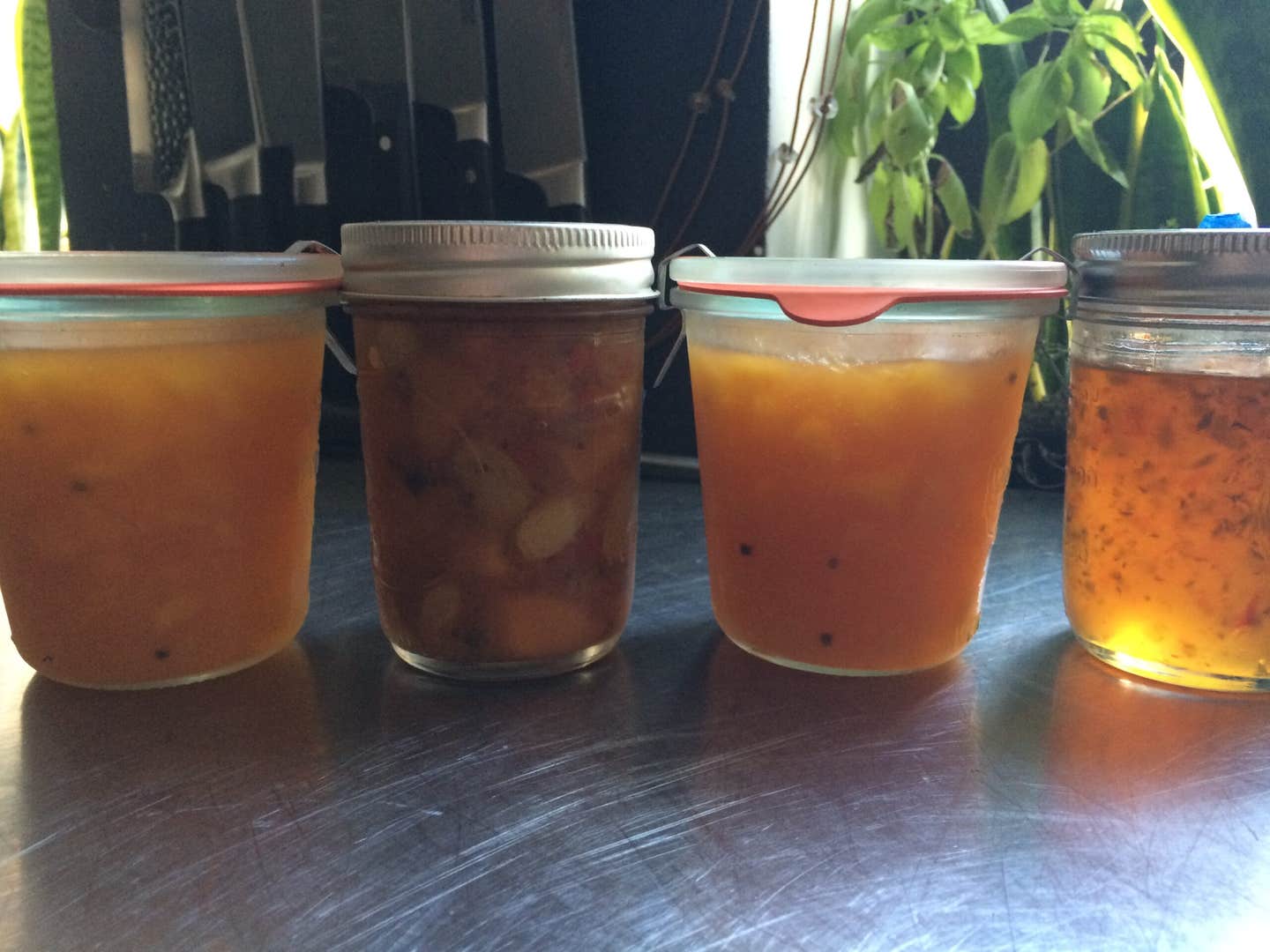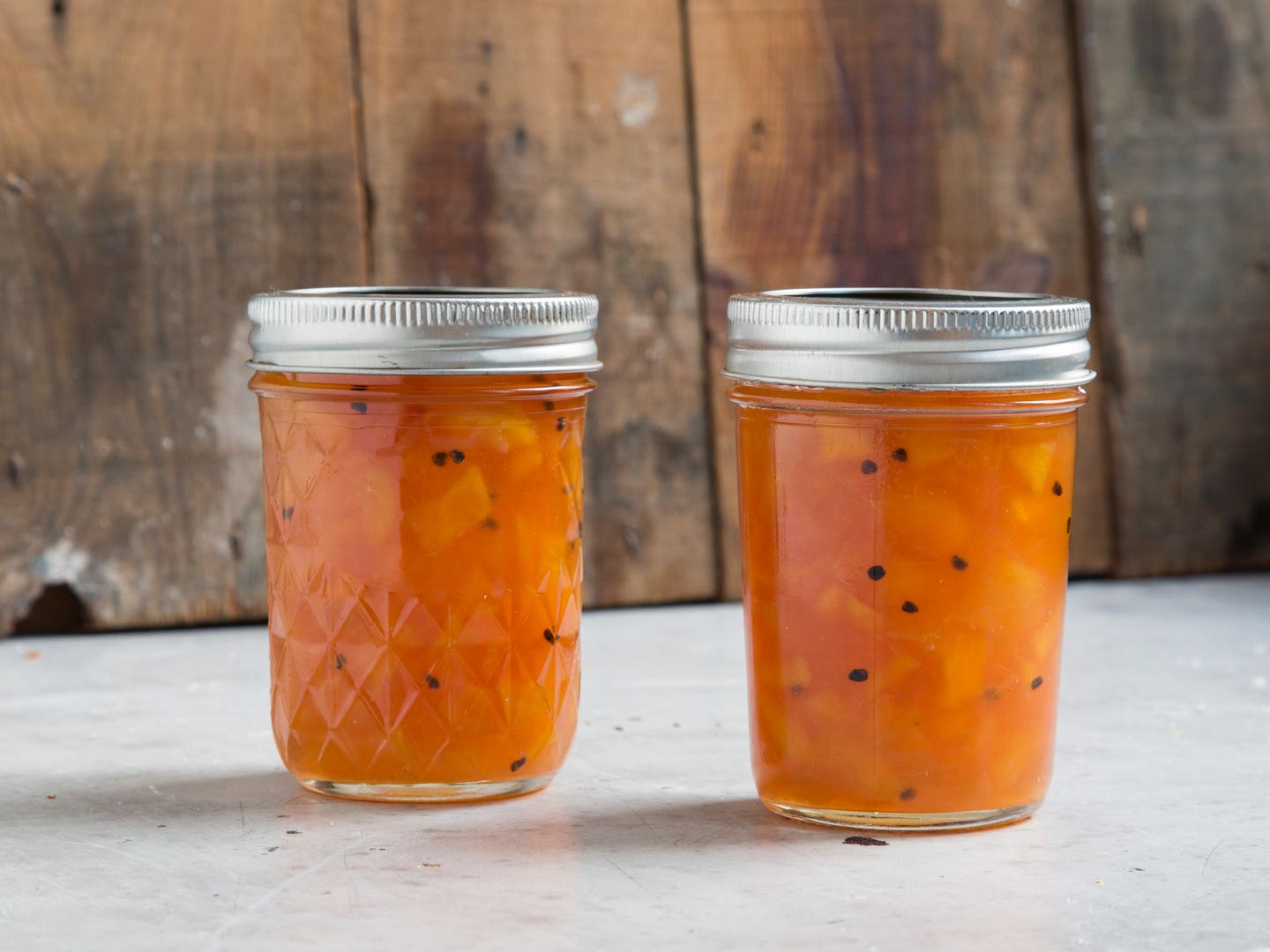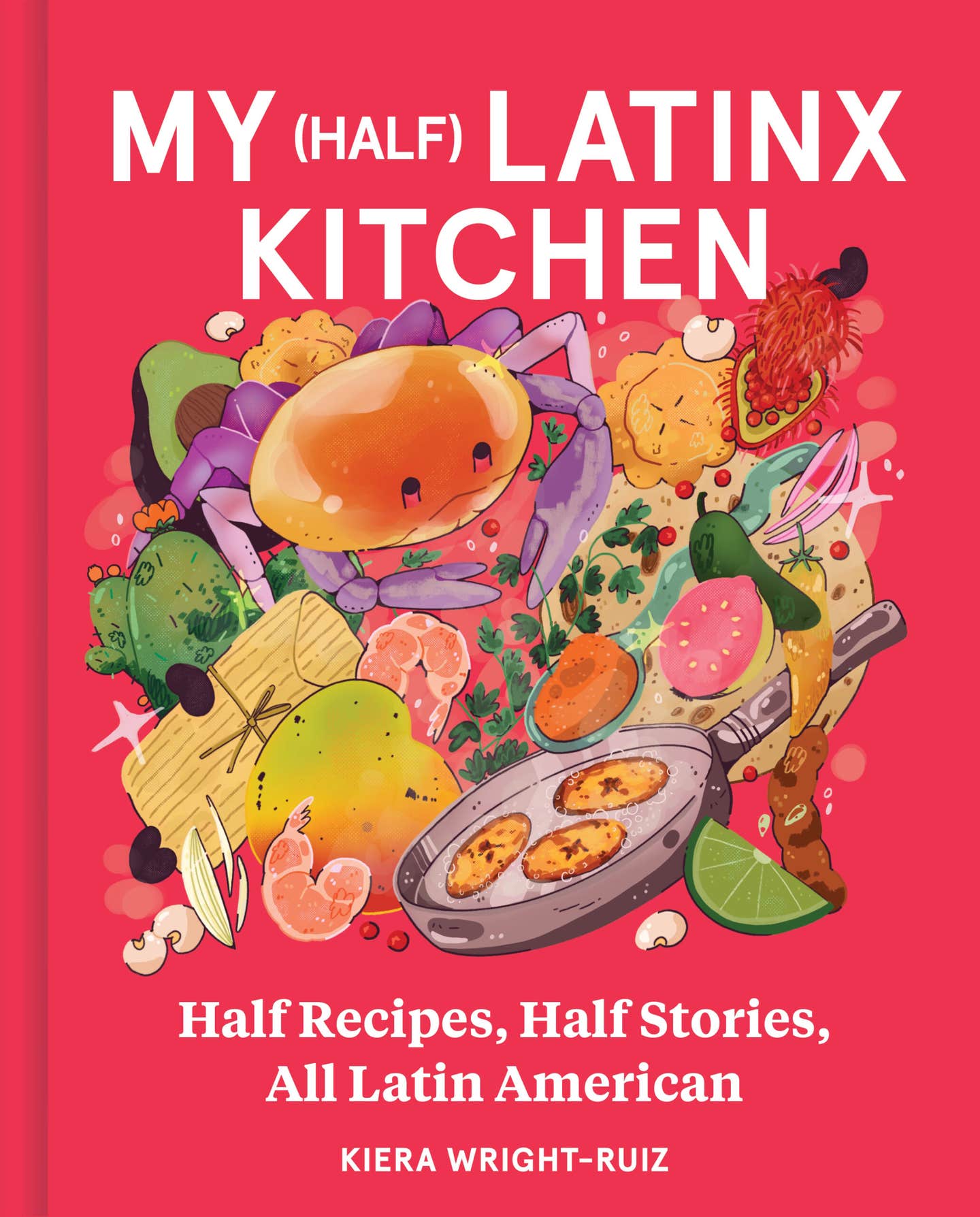
Make Your Peach Jam a Little Rock ‘N’ Roll
Cookbook author and preservation master Cathy Barrow tells us how to make an edgy peach jam
Most of my summer weekends start at the farmers' market and end in a vat of boiling water. Canning is my jam, and putting up food for the winter is what drives me. It’s delicious. It’s easy. It’s quick. And it’s the only way to eat locally year round.
Canning seems scary until you do it. If you’ve never preserved before, there is no reason to be afraid. Make jams, jellies and pickles and feel confident that nothing (really, nothing) will make people sick. If a jar goes bad, it will mold and you’ll see it. (And if you were French, you would throw out the moldy parts and keep enjoying the rest. Bien sûr!)
There’s no need for special equipment, although a couple of tools will make the job easier: a large pot to cook everything in, like a 5-quart heavy, non-reactive pan (my choice is a Le Creuset round Dutch oven) and a canning kettle deep enough to cover the jars with one inch of water. The jars need to sit upright in the canning kettle, so pop a round cake rack inside to keep them from jangling on the bottom of the pot and cracking. In the nice-to-have category, a jar lifter will facilitate placing and retrieving jars from the boiling water bath. A canning funnel fits inside the jar and gets the food in the jar, not on the counter.
Shelf stability is the goal and with high-acid (low pH) foods like jams and pickles, filled, capped jars are submerged in boiling water for a specific period of time and then removed from the boiling water to cool completely. Yes, that’s it. If you can pick up a jar and put it down, you can can. Every recipe will indicate the three things you need to know: the size of the jar, the headspace (the distance from the top of the jar to the top of the contents), and the processing time (how long the jar stays in the boiling water).
Worried about where to store your stash of jars? Be reasonable. There is no obligation to can like a survivalist. Make only what you love to eat, and only what you will use. It could be grape jelly, apple chutney, or dill pickles. It doesn’t matter. Make the food you can’t live without.
Unlike preserving in the past, today’s recipes tend toward small batches—just three or four jars. I think of it as one to eat, one to keep, and one to give away.
Start your stash with this peach jam, a bright, flavorful, tart and sweet all at once jam to appreciate now and store for later, long after peaches disappear from the market.
Grab your jars and go:
Use peaches at the height of their season for the best flavor. For a pleasing texture, always remove the peel either by blanching or using a serrated vegetable peeler. Preservers know to look for freestone peaches because they are so much easier to slice or chop into uniform pieces. When the pit clings mercilessly to the flesh of the peach, simply cut around the pit and make the best of it.
Any peach will make great preserves, but those that are perfectly ripe or even slightly underripe will form the best gel. When preparing the fruit, cut away bruises or other damaged places. Preserving means putting the best in the jar.
The finished jam, scented with cardamom and a whiff of the rough edge of rye, is perfection on a buttered biscuit. Try it rolled in a crepe. Brushed on grilled chicken. Stirred into yogurt. Slathered between layers of angel food cake. And count the days until summer when peach season rolls around again. By the time the snow flies, you’ll have a few jars stashed away for hostess gifts, secret Santas, and holiday brunches—if you can bear to part with them.
A Boiling Water Bath Primer
- Prepare your recipe.
- Fill the canning kettle with enough water to cover the jars by at least one inch, drop the rack in the bottom of the pot, and bring to a rolling boil.
- Wash the jars and lids with warm, soapy water. Place on a sheet pan lined with a kitchen towel. Gather the clips or rings.
- Ladle the food into the jars leaving the appropriate headspace (noted in the recipe). Carefully clean the rim of the jar using a damp towel. Cap the jar and snap on the clips (or finger tighten the ring).
- Keeping the jars upright, lower them into the boiling water. Process the jars in the waterbath starting the timer when the water returns to a rolling boil.
- Remove the jars from the waterbath (without tilting) and place back on the sheet pan lined with a towel. Allow to cool completely before washing the jars well and labeling with the contents and date.
- Store in a dark cool spot. Most home-canned products are shelf stable for 12 months.
Cathy Barrow is the author of the food blog Mrs. Wheelbarrow’s Kitchen. She lives in Washington, D.C., with her husband, Dennis, Louie and Morty, the two schnauzer mixes, and an all-white cat. In 2015, she won the IACP Award for best single-subject cookbook for Mrs. Wheelbarrow’s Practical Pantry.
Keep Reading
Continue to Next Story











